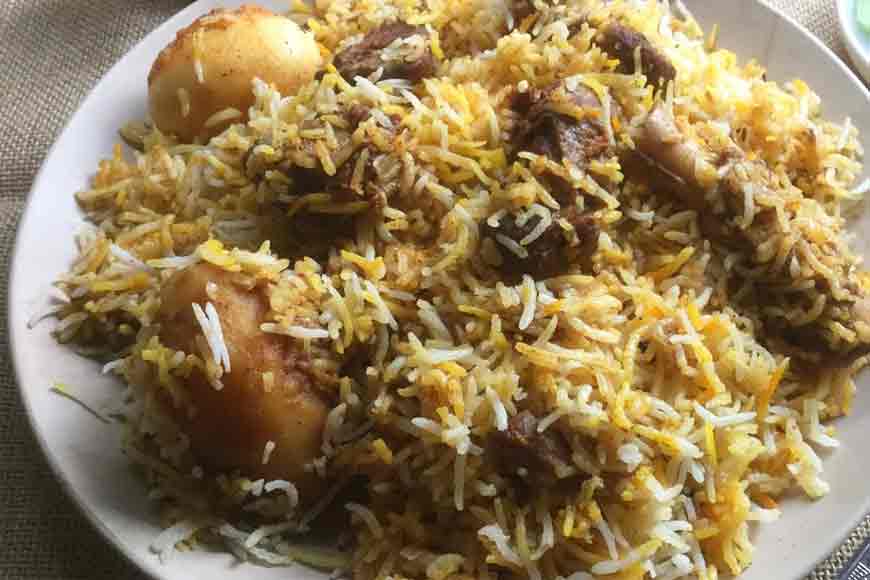
Make the marinade by mixing yogurt, ginger, garlic, turmeric, red chili powder, garam masala, salt, mint leaves, and lemon juice. Add chicken and coat evenly with the marinade. While the chicken is marinating, rinse and drain the rice 2 to 3 times, then soak in water for 20 minutes.
In a pakki biryani, the rice, marinated meat, and any vegetables are partially ("three-quarters") cooked separately, before being combined into layers in a cooking vessel. Different layers of rice may be treated with different spices (e.g., with dissolved saffron or turmeric to give the rice different colours and flavours). The contents are then baked to complete the cooking and allow the flavours to combine. Alternatively, the components may be fully cooked, and then simply combined by layering before serving.
In a kacchi biryani, layers of raw marinated meat are alternated in layers with wet, pre-soaked, raw rice (which may be treated with different spices as above), and cooked together by baking, or medium-to-low direct heat (typically, for at least an hour). Cooking occurs by a process of steaming from the ingredients' own moisture: the cooking vessel's lid is sealed (traditionally, with a strip of wheat dough) so that steam cannot escape (proper dum pukht).
A yoghurt-based marinade at the bottom of the cooking pot provides additional flavour and moisture. Potatoes often comprise the bottom layer (a technique also used in Iranian cuisine), because, with their natural moisture content, they brown well with less risk of getting burned accidentally. The lid is not opened until the dish is ready to serve. Kacchi biryani is technically much more demanding and time-consuming than pakki biryani, for the following reasons:
The different ingredients—meat, rice, vegetables—have different cooking times: tender cuts of meat/chicken can be fully cooked well before the rice is done. To prevent this, many kacchi recipes use parboiled (semi-cooked) rice rather than raw rice.
If direct heat is used, there is a risk that the food layer in contact with the vessel bottom may get burned while the interior's contents are still raw. This risk is minimized by sustained baking with moderate heat or very slow cooking on low direct heat. This approach, however, increases cooking time considerably.
One method is cooking the dish "blind", with the cooking vessel sealed, so one cannot monitor the cooking progress—it takes expertise and understanding of the raw foods used, the heat required to cook those raw foods, and how the climate can affect the cooking process. Hence making kacchi biryani requires a seasoned hand.